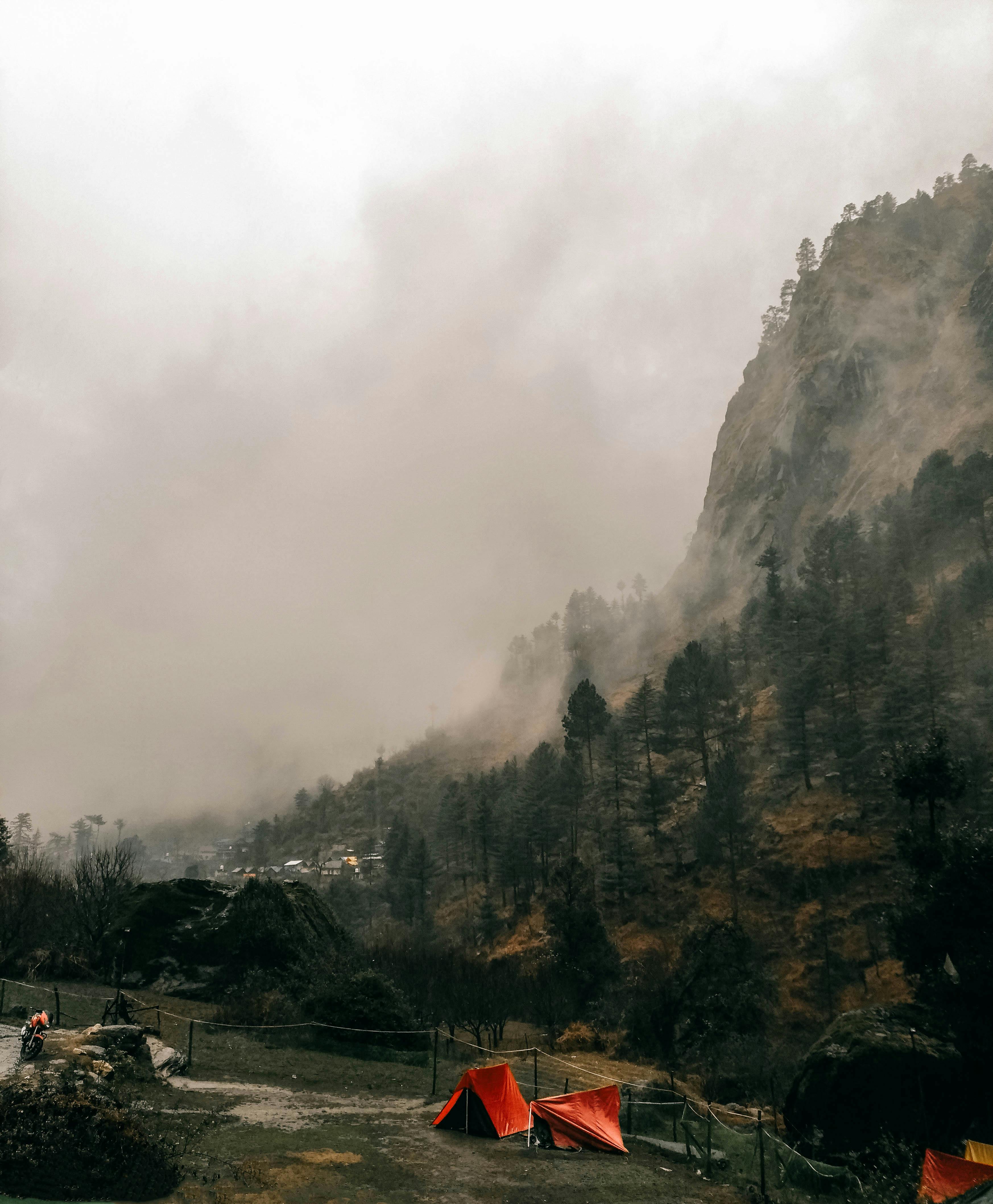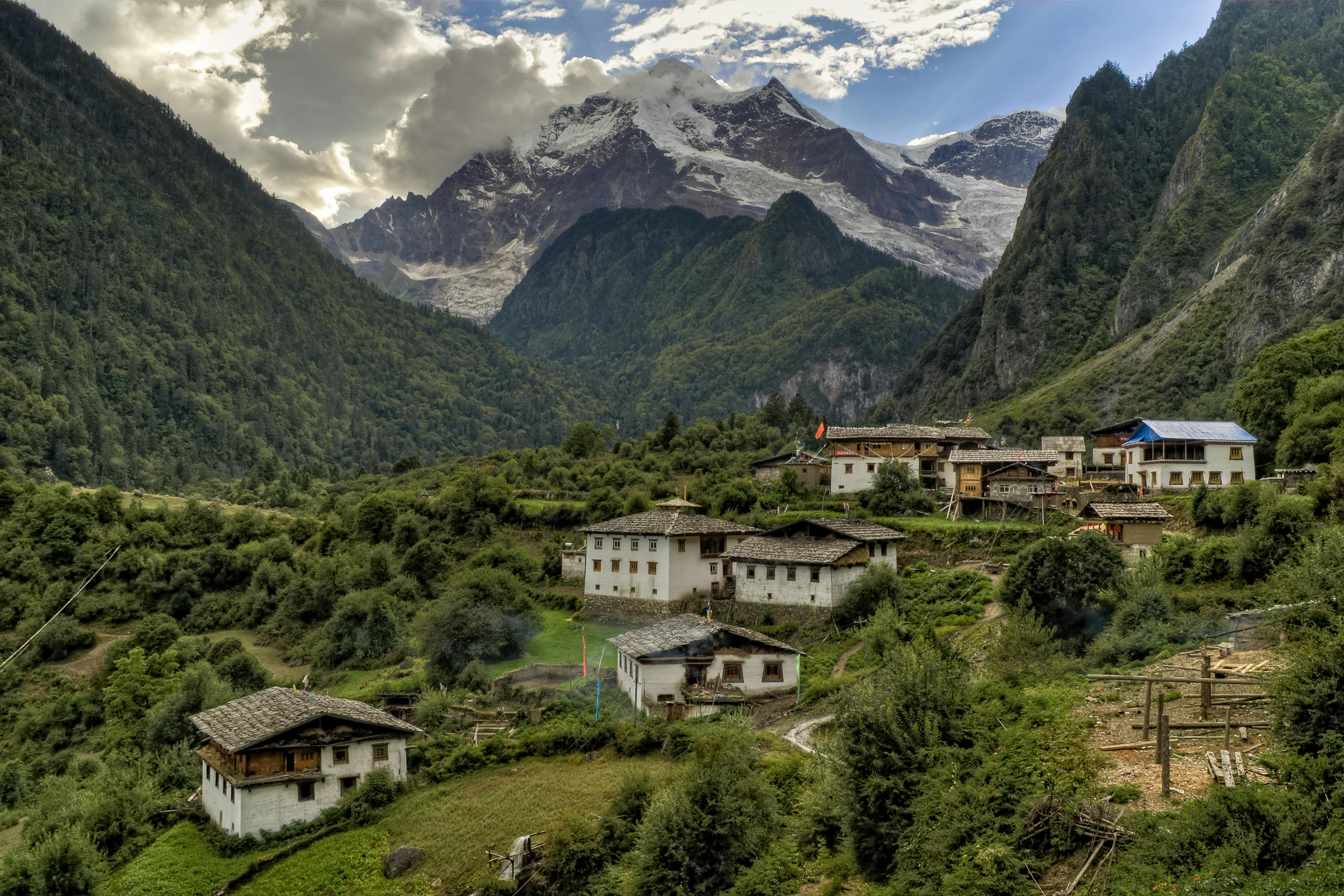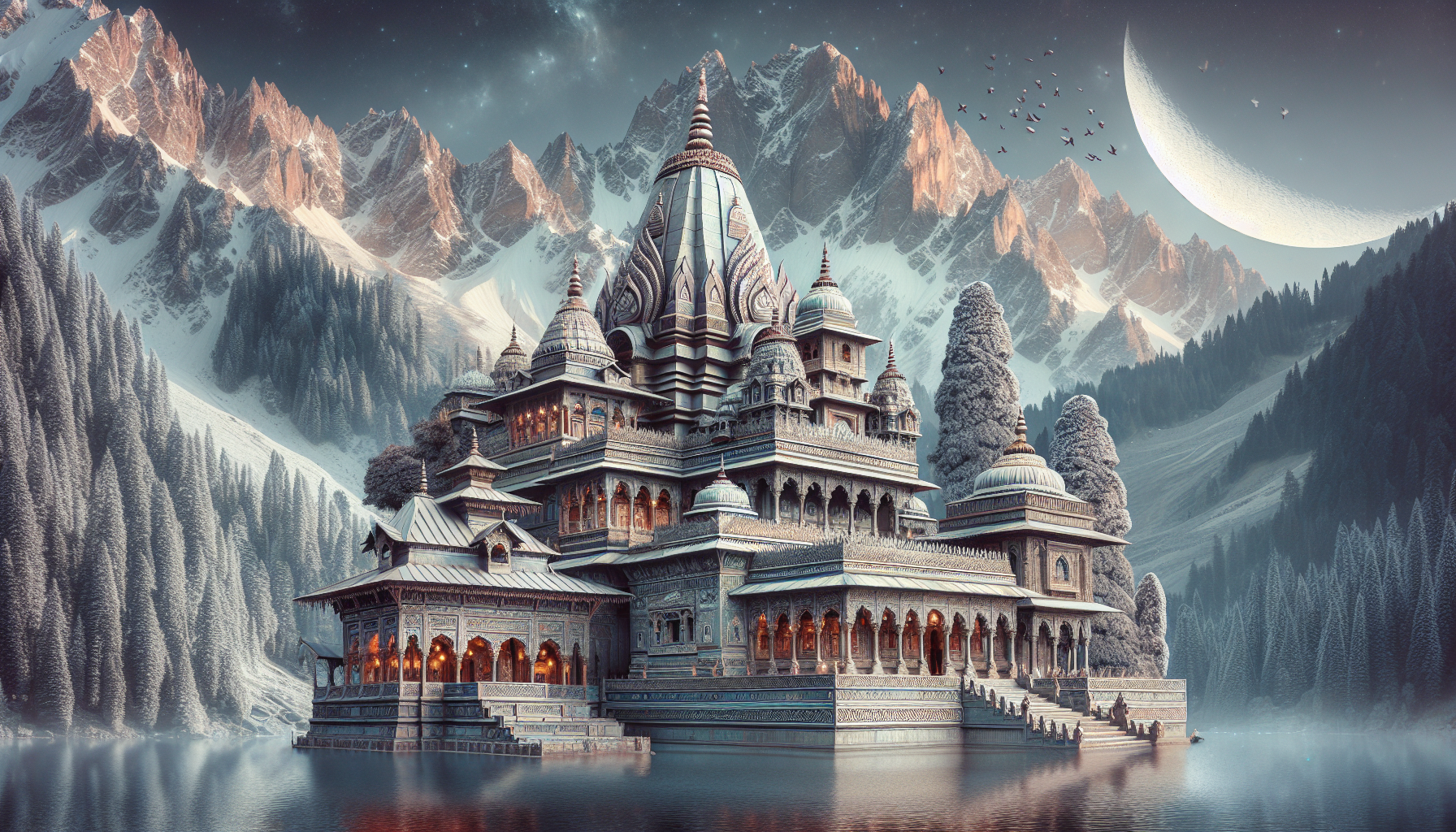Join us on a soul-stirring expedition across the sacred landscapes of India as we delve into the depths of religious heritage. IndianCulture.com invites you to uncover the divine allure of religious tourism, where the enchanting tapestry of history, faith, and culture harmoniously intertwine. Journey with us to the Shankaracharya Temple in Srinagar, a remarkable sanctuary perched atop a mountain, offering breathtaking vistas of the surrounding landscapes. Discover the profound spiritual significance of this ancient marvel, as we unveil the mysteries and marvels of the Lord of Mountains.

History of Shankaracharya Temple
Legend of the temple’s creation
The origins of Shankaracharya Temple in Srinagar, India, are shrouded in myth and legend. According to one popular belief, the temple was built by Lord Shankaracharya himself, the renowned Hindu philosopher and theologian. It is said that he visited the Kashmir region during the 9th century and was drawn to the serene beauty of the hills. Legend has it that he meditated on this very spot where the temple now stands. Thus, the temple holds deep spiritual significance for devotees who believe that Lord Shankaracharya left behind his divine energy in the temple’s sanctum.
Dedication to Lord Shankaracharya
Shankaracharya Temple is dedicated to Lord Shiva, also known as Shankaracharya. Lord Shiva is one of the principal deities in Hindu mythology and is considered the destroyer of evil and the creator of balance and harmony. The temple serves as a place of worship and adoration for Lord Shankaracharya, and devotees come from far and wide to seek his blessings and guidance. The name of the temple itself is a testament to the deep reverence and devotion that people hold for this legendary figure.
Significance in Hindu mythology
The Shankaracharya Temple holds great significance in Hindu mythology and is closely associated with the sacred texts and teachings of Hindu philosophy. It is believed to be an important site for spiritual enlightenment and a place where one can connect with the divine. Many stories and legends from Hindu mythology are associated with the temple, adding to its allure and mystique. The temple has long been considered a sacred place where devotees can come to seek solace, enlightenment, and spiritual growth.
Architecture and Structure
Location and panoramic view
Perched on top of the Shankaracharya Hill, the temple offers a breathtaking panoramic view of the surrounding landscape. The hill itself is located in the Zabarwan Mountain range, overlooking the beautiful city of Srinagar and the famous Dal Lake. The temple’s strategic location provides visitors with a sense of serenity and tranquility, as they are surrounded by the majestic Himalayas in the distance and the shimmering waters of the Dal Lake below.
Traditional Hindu temple design
The architecture of Shankaracharya Temple follows the traditional design principles of Hindu temples. It features intricate carvings and sculptures that depict various gods and goddesses from Hindu mythology. The temple is constructed using grey stone, giving it an ancient and rustic appearance. The sanctum of the temple houses a shrine dedicated to Lord Shankaracharya, where devotees offer their prayers and seek blessings.
Intricate stone carvings and sculptures
One of the most striking features of Shankaracharya Temple is its intricate stone carvings and sculptures. The walls and pillars of the temple are adorned with beautiful and detailed artwork, showcasing the skill and craftsmanship of the artisans of that era. Each carving tells a story from Hindu mythology, creating a visual narrative that adds to the spiritual ambience of the temple. Visitors can spend hours marveling at the intricate details and symbolism depicted in these stone carvings.

Spiritual Significance
Pilgrimage destination for Hindus
Shankaracharya Temple is considered a significant pilgrimage site for Hindus. Devotees from all over India and beyond visit the temple to seek blessings from Lord Shankaracharya and to deepen their spiritual connection. The temple holds a special place in the hearts of Hindus, who believe that a visit to the temple can bring them closer to god and help purify their souls. The spiritual atmosphere of the temple, combined with its breathtaking location, makes it an ideal destination for those seeking a deeper understanding of Hinduism.
Ancient rituals and traditions
The temple is known for its ancient rituals and traditions that have been passed down through generations. Priests perform daily rituals and puja (worship) ceremonies, following the ancient Vedic practices. Devotees can participate in these rituals and offer their prayers to Lord Shankaracharya. The temple also has a holy water tank where devotees can take a dip to cleanse themselves spiritually. These rituals and traditions connect visitors to the rich cultural heritage and religious practices of Hinduism.
Religious festivals and celebrations
Shankaracharya Temple is a hub of activity during religious festivals and celebrations. The major Hindu festivals, such as Mahashivratri and Diwali, are celebrated with great enthusiasm and fervor at the temple. Devotees gather in large numbers to seek the blessings of Lord Shankaracharya and to participate in the festivities. The temple complex comes alive with vibrant decorations, devotional music, and cultural performances. These festivals not only provide a sense of community and joy but also deepen the spiritual bond between the devotees and the divine.
Surrounding Natural Beauty
Journey to the temple
The journey to Shankaracharya Temple is an experience in itself. Visitors can either take a picturesque trek up the Shankaracharya Hill or opt for a short drive to the temple entrance. The trek offers breathtaking views of the surrounding landscape, with every step revealing a new facet of nature’s beauty. The lush greenery, colorful wildflowers, and melodious birdsong create a soothing and peaceful atmosphere. It is a journey that prepares the mind and the soul for the spiritual encounter that awaits at the temple.
Views of the Himalayas
The Shankaracharya Temple provides visitors with a majestic view of the Himalayan mountain range. The snow-capped peaks, stretching as far as the eye can see, evoke a sense of awe and wonder. The sheer grandeur of the Himalayas serves as a reminder of the immense power and beauty of nature. The panoramic view from the temple showcases the pristine beauty of this iconic mountain range, offering a glimpse of the divine in its purest form.
Picturesque Dal Lake
Adjacent to the Shankaracharya Temple lies the enchanting Dal Lake, known for its picturesque beauty. The temple’s location on the hill provides a stunning view of the vast expanse of the lake, with its shimmering waters reflecting the colors of the sky. The sight of the traditional houseboats floating peacefully on the lake adds to the charm and tranquility of the surroundings. The beauty of Dal Lake, combined with the spiritual aura of the temple, creates a sense of serenity that is both soothing and uplifting.

Historical Significance
Link to the Mauryan Empire
The history of Shankaracharya Temple can be traced back to ancient times when the Mauryan Empire ruled over the Indian subcontinent. It is believed that the temple was initially built by Emperor Ashoka, one of India’s greatest rulers, during his reign in the 3rd century BCE. The temple served as a place of worship for both Hindus and Buddhists during this period and played a significant role in promoting religious tolerance and harmony. The connection to the Mauryan Empire adds a layer of historical significance to the temple’s legacy.
Influence of Buddhism and Hinduism
Shankaracharya Temple stands as a testament to the coexistence and interplay between Buddhism and Hinduism during ancient times. The temple’s location in the Kashmir region, which was an important center of Buddhist learning, reflects the influence of both religions. Over the centuries, the temple has witnessed a merging of these two distinct faiths, with elements of both Buddhism and Hinduism present in its architecture and rituals. This unique blend of religious traditions showcases the harmonious nature of religious diversity in India.
Preservation during Mughal rule
The preservation of Shankaracharya Temple during the Mughal rule in India is a testament to the resilience and enduring spirit of the temple and its devotees. Despite the efforts of the Mughal rulers to suppress Hindu temples and traditions, Shankaracharya Temple managed to survive. It is said that the temple’s sanctity was respected by the Mughal emperors, who allowed the devotees to continue their worship undisturbed. This preservation of the temple’s cultural and religious heritage amidst challenging times is a testament to the devotion and resilience of the local community.
Visiting the Temple
Entry requirements and timings
To visit Shankaracharya Temple, visitors are required to adhere to certain entry requirements. A valid identification document is necessary for security purposes. The temple is open to visitors from sunrise to sunset, allowing ample time for devotees and tourists to explore its wonders. It is advisable to visit the temple early in the morning to witness the breathtaking sunrise over the Himalayas and avoid the crowds that gather later in the day.
Guided tours and local guides
For a more enriching and informative experience, visitors can opt for guided tours of Shankaracharya Temple. Knowledgeable guides are available at the temple entrance to provide insights into the temple’s history, architecture, and spiritual significance. These guides offer a wealth of information, allowing visitors to deepen their understanding and appreciation of the temple’s cultural and religious heritage. Their guidance adds a layer of context and meaning to the visit, making it a truly memorable experience.
Dos and don’ts for visitors
To maintain the sanctity and respect of Shankaracharya Temple, visitors are encouraged to follow certain dos and don’ts. It is customary to remove footwear before entering the temple premises as a sign of reverence. Visitors should dress modestly, covering their shoulders and knees, as a mark of respect for the sacredness of the site. Photography is allowed but should be done discreetly and respectfully. It is advisable to maintain silence and refrain from disturbing the peaceful atmosphere of the temple.
Nearby Attractions
Char Chinar island
Located on the picturesque Dal Lake, Char Chinar island is a popular tourist attraction near Shankaracharya Temple. The island is named after the four majestic Chinar trees that grace its landscape, creating a serene and tranquil atmosphere. Visitors can take a shikara (traditional Kashmiri boat) ride to the island, enjoying the serenity of the lake and the breathtaking views of the surrounding mountains. The island offers a peaceful retreat where one can connect with nature and appreciate the beauty of the Kashmiri landscape.
Nishat Bagh
Nishat Bagh, also known as the Garden of Joy, is a Mughal garden located on the eastern side of Dal Lake. It is considered one of the most beautiful gardens in the Kashmir region, with terraced lawns, vibrant flowerbeds, and cascading fountains. The garden provides a perfect backdrop for leisurely walks and peaceful contemplation. Visitors can admire the exquisite architecture and enjoy the tranquility of the surroundings, taking in the scents and sights of the meticulously manicured gardens.
Shalimar Bagh
Shalimar Bagh, meaning the Garden of Love, is another Mughal garden that captivates visitors with its symmetrical layout and stunning flora. Built by Emperor Jahangir as a gift for his wife, the garden exudes romance and elegance. The terraced garden, adorned with colorful flowerbeds and lush greenery, is a visual delight. Visitors can stroll along the garden pathways, enjoying the cool breeze and the fragrance of the flowers. The enchanting beauty of Shalimar Bagh makes it a must-visit attraction for nature lovers and romantics alike.
Local Culture and Traditions
Kashmiri cuisine and delicacies
A visit to Shankaracharya Temple is incomplete without indulging in the diverse and flavorful Kashmiri cuisine. Known for its rich flavors and unique blend of spices, Kashmiri cuisine offers a culinary journey that delights the taste buds. From the famous Rogan Josh (a hearty meat curry) to the aromatic Kashmiri Pulao (a rice dish infused with saffron), visitors can savor the flavors of the region. The local delicacies, such as Wazwan (a traditional multi-course meal) and Kahwa (a fragrant herbal tea), provide an authentic glimpse into the culinary traditions of Kashmir.
Traditional arts and crafts
The Kashmir region is renowned for its exquisite arts and crafts, which are deeply intertwined with its rich cultural heritage. Visitors to Shankaracharya Temple can explore the local markets and shops to discover a treasure trove of traditional handicrafts. Kashmiri carpets, renowned for their intricate designs and craftsmanship, are a popular buy among tourists. Other traditional crafts include Pashmina shawls, papier-mâché products, and wooden carvings. Supporting local artisans not only preserves the traditional skills but also provides visitors with unique and authentic souvenirs to cherish.
Folk dance and music
The local culture of Kashmir comes alive through its vibrant folk dances and music. The rhythmic beats of traditional Kashmiri instruments like the Santoor and the Rabab create a melodic backdrop for the spirited dance performances. The Dumhal, a popular folk dance, showcases the colorful costumes and energetic movements of the performers. Visitors can witness these cultural performances during festivals and cultural events, gaining a deeper appreciation for the rich heritage and traditions of Kashmir.
Spiritual Experiences and Testimonials
Devotee experiences at the temple
For devotees of Lord Shankaracharya, a visit to the temple is a profound spiritual experience. Many describe a sense of serenity and peace enveloping them as they enter the temple complex. The immersive atmosphere created by the chants and prayers resonates deep within the visitors’ souls, leaving them with a feeling of spiritual upliftment. Devotees often share stories of their personal experiences and encounters with the divine within the temple, testifying to the transformative power of their visit.
Miraculous stories and legends
Shankaracharya Temple is not only a place of religious worship but also a site of miraculous stories and legends. Countless devotees have shared tales of their prayers being answered and their lives being transformed after visiting the temple. Some claim to have witnessed divine manifestations or experienced inexplicable phenomena while inside the temple. These miraculous stories, passed down through generations, add to the aura of mysticism and devotion surrounding the temple.
Transformational impact on visitors
Visitors to Shankaracharya Temple often report a profound sense of peace, clarity, and spiritual rejuvenation. The serene environment, coupled with the powerful energy of the temple, has the ability to calm restless minds and open hearts to new possibilities. Many visitors describe a deep sense of connection with the divine and a renewed purpose in life after their visit. The temple’s spiritual impact extends beyond religious beliefs, touching the lives of people from all walks of life and leaving an indelible mark on their souls.
Preserving the Heritage
Conservation efforts and initiatives
Preserving the heritage and cultural significance of Shankaracharya Temple is of utmost importance. Several conservation efforts and initiatives have been undertaken to protect and maintain the temple’s architectural integrity and historical value. Regular maintenance and restoration activities are carried out to ensure the longevity of the structure, with experts working diligently to preserve the intricate stone carvings and sculptures. These conservation efforts help safeguard the temple’s cultural legacy and ensure that future generations can continue to admire its beauty and significance.
Role of government and local community
The preservation of Shankaracharya Temple is a collaborative effort between the government and the local community. The government plays a crucial role in providing financial and logistical support for the temple’s upkeep. Additionally, the local community actively participates in the maintenance and management of the temple, ensuring that it remains a vibrant and thriving spiritual center. This collective responsibility is a testament to the deep-rooted love and reverence that the community holds for the temple and its historical importance.
Challenges and future plans
Preserving a centuries-old heritage site comes with its own set of challenges. The delicate nature of the stone carvings, exposure to the elements, and increasing tourism footfall pose threats to the temple’s preservation. However, efforts are being made to address these challenges and develop sustainable plans for the future. Upgrading infrastructure, implementing strict conservation guidelines, and raising awareness about the temple’s historical significance are some of the initiatives undertaken to safeguard its heritage. The aim is to ensure that Shankaracharya Temple continues to be a beacon of spirituality and a testament to India’s rich cultural heritage for generations to come.
In conclusion, Shankaracharya Temple in Srinagar stands as a testament to the rich cultural and spiritual heritage of India. Its awe-inspiring architecture, breathtaking surroundings, and deep-rooted significance in Hindu mythology make it a must-visit destination for devotees and tourists alike. The temple not only offers a glimpse into the ancient traditions and rituals of Hinduism but also provides a transformative and soul-stirring experience for those who seek solace and spiritual connection. As efforts are made to preserve and protect this historical site, Shankaracharya Temple will continue to inspire and enchant visitors, carrying forward its legacy of divine devotion and cultural preservation.
